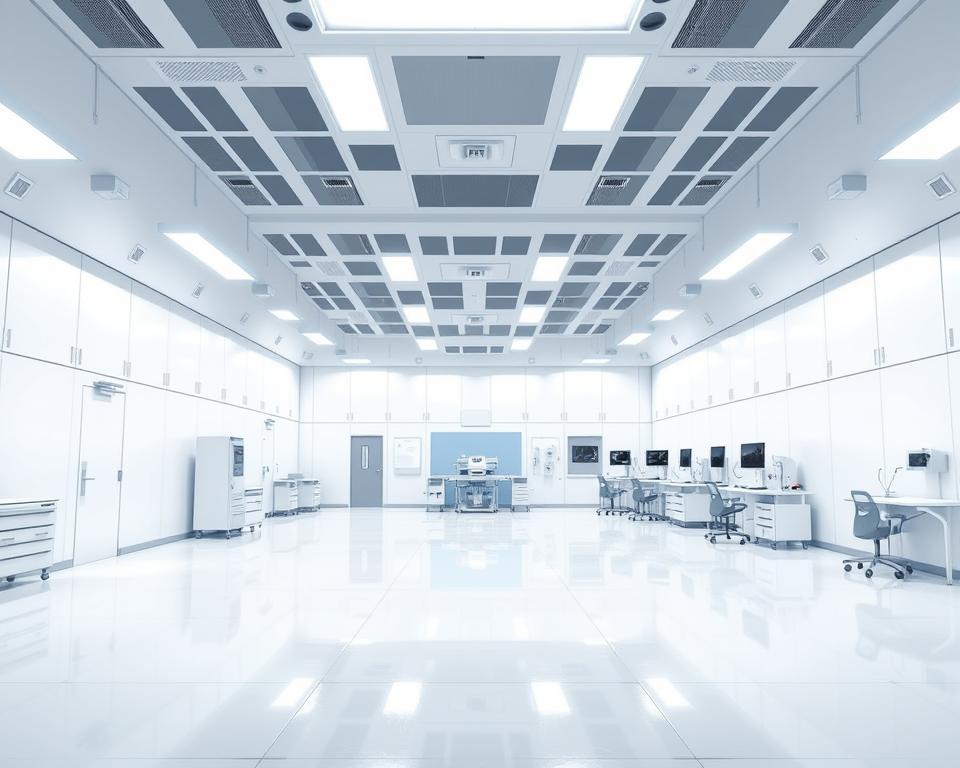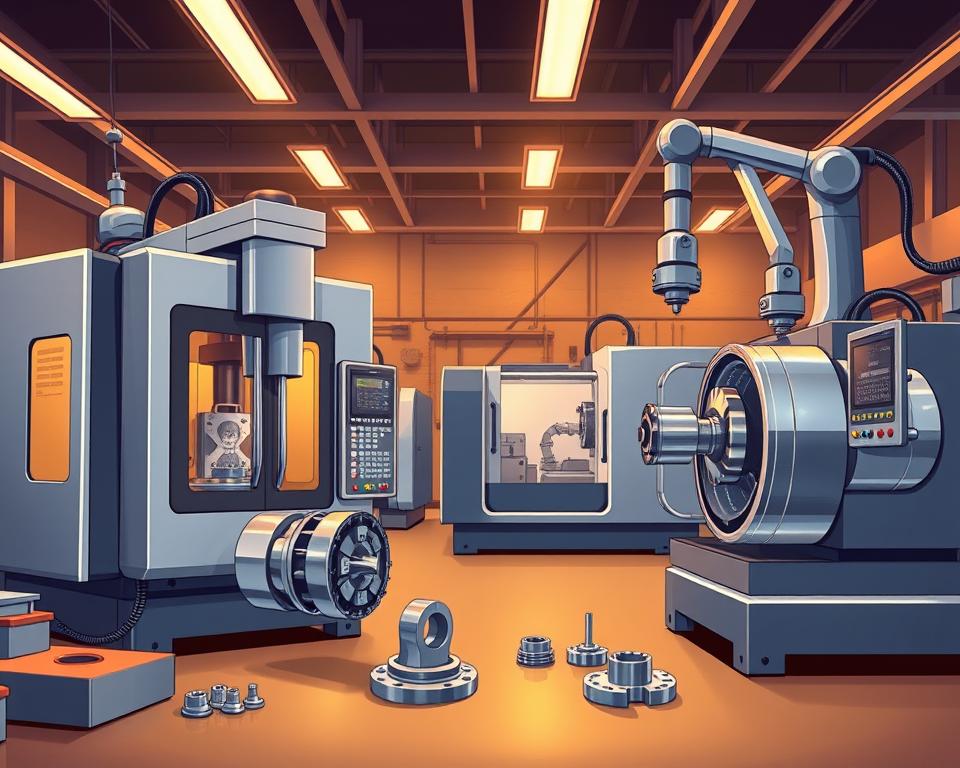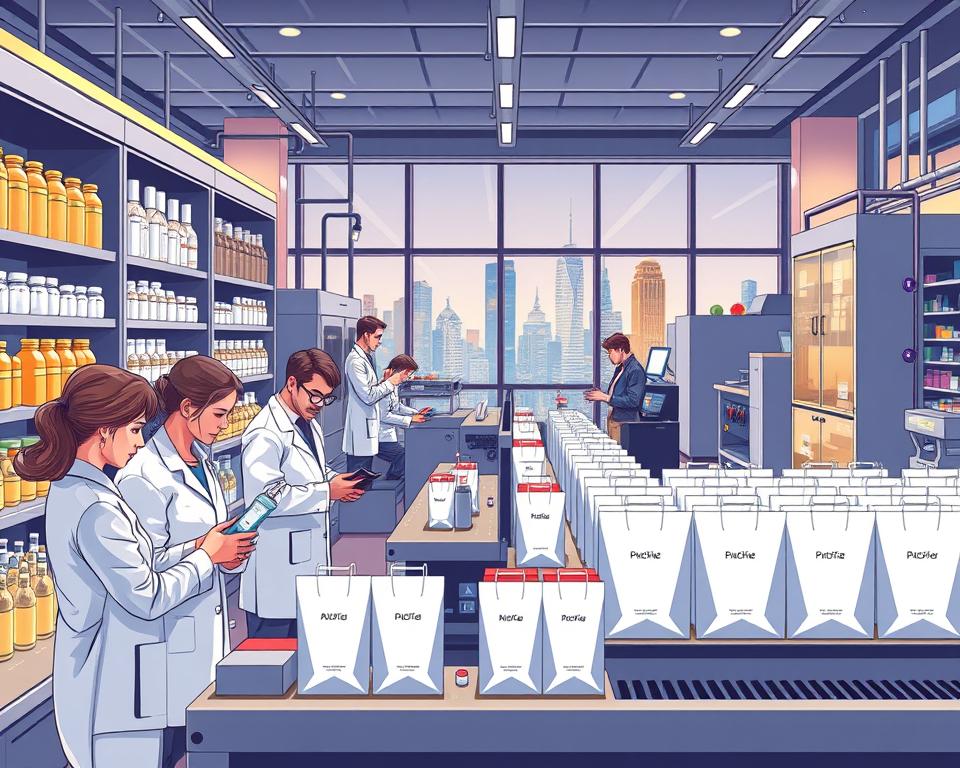Medical Clean Room Assembly Services in Singapore by AMT
Almost 70% of medical device contamination comes from the assembly or transportation process. This demonstrates the importance of cleanroom assembly is for patient safety and product approval.
AMT Medical Clean Room Assembly Services in Singapore possesses more than 30 years of experience in AMT’s medical clean room assembly. Their workforce of roughly 350 people serves clients in more than 30 nations worldwide. This establishes Singapore as a key place for precision assembly tasks and medical clean room construction.
AMT holds certifications for ISO 13485, ISO 9001, and IATF 16949. They utilize stringent quality systems to support programs for regulated devices. Their facilities support Class 100K (ISO Class 8) clean rooms. They also offer services like single-site injection molding, tooling, and assembly. This minimizes the risk of contamination and streamlines the process.
This piece explains how AMT’s medical clean room assembly aids with regulatory compliance. Furthermore, it details their methods for managing microbial control and integrating various processes. These initiatives allow medical manufacturers to get their products to market more quickly. They also serve to protect the sterility of products and safeguard intellectual property.
A Look at AMT’s Medical Clean Room Assembly Services
Based in Singapore, AMT Pte. Ltd. has served as a trusted partner in the manufacturing of medical devices for over three decades. Collaborating with clients from over 30 nations, they maintain strong connections with Asian suppliers. Around 350 local employees work at the Singapore headquarters to provide regional support.
AMT is renowned for its high-quality standards, thanks to key certifications. Compliance with medical device regulations is assured by their ISO 13485 certification. Quality management across every operation is guaranteed by ISO 9001. IATF 16949 highlights their capability in automotive-grade process control, useful for medical device assembly.

A significant advantage of AMT is its integration at a single site. They handle tooling, 3D metal printing, metal and ceramic injection molding, and clean room assembly all in one location. This method leads to shorter lead times and a reduced risk of contamination.
AMT’s clean room assembly can handle both sterile and non-sterile products. Their integrated workflows for molding, inspection, packaging, and assembly enhance traceability and quality control. This makes production more streamlined.
For clients who need assembly in controlled settings, AMT’s vertical integration model offers a substantial benefit. Having tooling and molding near cleanroom operations decreases the number of handling steps. This also simplifies logistical challenges and guarantees consistent control over the environment.
AMT – medical clean room assembly
Medical clean room assembly services are offered by AMT. These offerings are designed to help medical device manufacturers located in Singapore and the surrounding regions. They focus on clean production in ISO Class 8 areas. In these areas, components are manufactured, assembled, and packaged according to stringent cleanliness protocols. Comprehensive services for molding, assembly, validation, and microbial testing are provided by AMT.
Definition and primary services offered under this keyword
AMT specializes in medical clean room assembly. This work is performed in specialized cleanrooms for parts of medical devices. The main services are molding in cleanrooms, assembling components, final packing, checking the environment, and testing for microbes. AMT contributes to the production of surgical parts and devices that demand a sterile environment.
How Class 100K (ISO Class 8) cleanrooms support device manufacturing
Class 100K cleanrooms keep the air clean enough for many types of assembly. This helps prevent particle contamination in devices like parts for endoscopes. Regular checks of the air, differential pressure, humidity, and temperature are conducted by AMT. This practice ensures they remain compliant and maintain thorough documentation.
Advantages of Vertical Integration in Controlling Contamination and Logistics
Contamination is more easily avoided when molding and assembly are co-located. It makes for shorter lead times and simpler quality checks. The method used by AMT minimizes problems, improves traceability, and leads to cost savings from reduced transportation.
This way of working helps keep AMT’s production processes clean and focused. It makes for better products and simpler paperwork for manufacturers. They rely on AMT to meet their requirements.
Understanding Cleanroom Classifications and Compliance in Medical Device Assembly
Matching the appropriate environment to product risks is made easier by understanding cleanroom classifications. Compliance for cleanroom assembly is based on establishing clear particle limits, performing regular monitoring, and maintaining validation proof. This part covers ISO Class 8 standards. Additionally, it addresses the monitoring techniques that ensure medical assembly lines meet required standards in %place% and elsewhere.
Requirements for ISO Class 8
The maximum allowable concentration of airborne particles, categorized by size, is defined by ISO Class 8 cleanroom standards. They are perfect for many medical device assembly jobs where total sterility isn’t needed. The industry often calls it Class 100K. This designation is commonly used for tasks involving plastic injection molding and assembly.
Validation and monitoring practices
Routine environmental checks are critical for medical cleanrooms. To ensure air particle levels remain within predefined limits, facilities monitor them closely.
Teams check the pressure difference between areas to keep the air moving correctly. Temperature and humidity are also controlled to prevent product damage and minimize contamination risks.
Regular validations are performed, and detailed records are kept to prove compliance with regulations. Special teams check for microbes to spot any problems early and fix them when necessary.
Alignment with Regulations
Complying with the rules set by bodies like the US Food and Drug Administration and the European Medicines Agency is vital. Keeping ISO 13485 certification and detailed validation records is essential for passing audits and making regulatory filings for device makers.
Having good records of cleanroom procedures, doing requalifications regularly, and tracking data proves manufacturers have everything under control during inspections. Building medical cleanrooms to these standards makes passing regulatory checks easier and speeds up time to market.
Integrated manufacturing: injection molding and clean room assembly
Integrating both molding and assembly in one location makes producing medical equipment smoother. This results in reduced internal movement of components within the facility. Plus, it makes it easier to keep an eye on quality, from the molding to the final packaged product.
Benefits of Integrating at a Single Site
The handling of parts is substantially minimized when injection molding and assembly operations are performed together. This leads to quicker prototype development and faster start of production. It facilitates close cooperation between the tooling, molding, and assembly teams. This ensures the quality checks meet the same high standards.
Minimizing Contamination Risk and Saving on Logistics Costs
By not moving things between locations, there’s less chance for things to get contaminated. Costs for packaging, shipping, and handling also go down. Centralizing all operations simplifies the management of quality control and regulatory compliance. This contributes to a more efficient clean room assembly process.
Examples of product types suited to integrated processes
Products like endoscopic pieces, housings for surgical instruments, and parts for minimally invasive devices do well in this integrated system. Depending on the sterilization and packaging, both sterile and non-sterile items can be made.
| Type of Product | Main Benefit of Integration | Typical Controls |
|---|---|---|
| Endoscopic lenses and housings | Reduced particulate transfer between molding and optics assembly | Particle counts, ISO-classified assembly zones, validated cleaning |
| Surgical instrument housings | Improved dimensional control and traceability across batches | Material lot tracking, in-line inspection, sterilization validation |
| Minimally invasive device components | Efficient change control for fast design updates | Molding in a controlled environment, testing for bioburden, documenting processes |
| Housings for disposable diagnostics | Reduced logistics costs and quicker market entry | Consolidated supply chain, final inspections, batch records |
Opting for a facility that manages both clean room assembly and cleanroom injection molding ensures improved quality control and dependable production schedules for medical devices. This approach minimizes risks and maintains value, from the first prototype to the final product shipment.
Medical device assembly use cases and environment selection
It is essential to select the appropriate environment for medical device assembly. AMT offers options from strict ISO-classified rooms to controlled white rooms. This adaptability allows for matching the assembly process to the risk level of the specific device.
When to choose a cleanroom vs. a white room for assembly
An ISO-classified cleanroom should be used when particular levels of cleanliness are necessary. This applies to devices such as implants and sterile disposable products. They are protected during assembly and packaging in cleanrooms.
Choose white room assembly if higher particle counts are acceptable. It continues to offer controlled conditions, including managed air flow and filtered HVAC systems. For many external-use devices, this option maintains quality while keeping costs low.
Device risk profiles that require ISO-classified environments
Sterile assembly environments are necessary for particular types of devices. Implants and surgical instruments serve as examples. Assembly for these items usually occurs in sterile and clean settings.
ISO-classified spaces should be used if a device affects health or if its performance is sensitive to particles. AMT’s cleanrooms offer validated controls for high-risk product assembly.
Lower-risk assemblies suitable for standard controlled environments
Devices used outside the body or parts needing later sterilization fit standard environments well. They are cost-effective and adhere to good manufacturing practices.
Conducting assembly in non-ISO environments can accelerate the market launch of low-risk products. It provides quality without the cost of strict cleanroom standards.
| Assembly Setting | Common Applications | Key Controls | Cost Impact |
|---|---|---|---|
| Cleanroom (ISO-classified) | Implants, sterile disposables, invasive instruments | HEPA filters, particle count monitoring, gowning protocols, validated processes | Significant |
| White room assembly | External-use devices, components for later sterilization | Access control, hygiene protocols, filtered HVAC systems | Moderate |
| Standard controlled environment | Prototypes, non-sterile subassemblies, low-risk parts | Basic controls for contamination, cleaning schedules, traceability measures | Minimal |
Quality assurance and microbiological controls in clean room assembly
Robust quality systems ensure medical equipment is safe and reliable. AMT follows clean room standards. These standards comply with ISO 13485 and the particular requirements of Singapore. Keeping detailed records and doing regular checks are key for meeting clean room rules across all manufacturing stages.
Validation schedules and documentation practices
Validation is planned and covers checking the environment, equipment, and processes. This includes counting particles and microbes, logging pressure differences, and tracking temperature and humidity. Also, CAPA traces are recorded. All of this documentation helps to prove compliance with the stringent clean room regulations for medical equipment.
Microbiological inspection teams and routines
Special teams focus on checking surfaces and air, and analyzing cultures. They identify trends, look into anomalies, and verify the effectiveness of cleaning procedures. Their job is to keep strict control over microbes. This helps prevent contamination in sterile and sensitive medical tools.
Traceability, batch records, and packaging controls
For each medical device, we keep detailed records. This includes info on materials, machine settings, and who operated the machines. Packaging procedures vary depending on the risk associated with the device. Sterile devices get special sterile packaging. Non-sterile items receive protective, non-sterile packaging. Every step ensures proper execution from the start until the final shipment.
| Quality Element | Common Activities | Deliverables |
|---|---|---|
| Schedule for Validation | Regular qualification runs, revalidation following change control, seasonal checks of the environment | Protocols for validation, reports on acceptance, certificates for requalification |
| Monitoring of the Environment | Sampling of air and surfaces, counting particles, monitoring differential pressure | Logs kept daily, charts showing weekly trends, reports on exceptions |
| Microbiology oversight | Testing of cultures, investigations of rapid alerts, studies on cleaning effectiveness | Microbial test results, corrective actions, method validations |
| Traceability | Material lot tracking, operator and equipment records, digital batch histories | Full batch records, lists of serialized lots, trails for auditing |
| Packaging control | Validated sterile packaging runs, sealing integrity checks, labeling verification | Packaging validation reports, sterility assurance documentation, shipment records |
Technical capabilities supporting medical equipment manufacturing
In Singapore, AMT combines precise component technology with cleanroom assembly for manufacturing medical equipment. These capabilities enable design teams to move quickly from concept to an approved product. This happens without waiting long for different companies.
Detailed features that are not possible with plastics can be created using metal and ceramic injection molding. Parts made from stainless steel and cobalt-chrome are produced for instruments and implants. Ceramic materials are used to create durable and biocompatible components for diagnostics and medical replacements.
Developing tools in-house ensures molds and dies are just right in size and smoothness. Rapid tool modifications significantly cut down on waiting times and lower the risk associated with parts that require a perfect fit. This also helps to control costs during scaled-up production.
3D metal printing makes making samples faster and allows for complicated shapes. Engineers check the shape, working, and fitting this way before making lots. Mixing 3D printing with usual molding accelerates the launch of new medical products.
The joining of dissimilar materials, such as metal, ceramic, and plastic, is made possible by these techniques. Techniques for joining, like overmolding, are carried out in clean environments to maintain precision. This results in reliable assemblies for surgical instruments, diagnostic equipment, and implantable components.
Manufacturers can have a single partner by utilizing metal and ceramic injection molding, tool making, and 3D printing. This ally helps in making samples, approving, and making more advanced medical devices. It reduces the complexity of managing multiple groups, protects intellectual property, and streamlines the process of obtaining regulatory approval.
Advantages in Supply Chain and IP Protection for Contract Manufacturing
The Singapore hub of AMT tightly integrates sourcing, production, and distribution. This provides support for the large-scale manufacturing of medical equipment. Centralized workflows are designed to reduce lead times and facilitate planning for large volume orders. For companies that require reliable components and consistent timelines, this approach offers distinct supply chain advantages.
Steady access to materials and effective cost management are ensured through strong partnerships in Asia. Trusted vendors in Malaysia, Thailand, and Vietnam are among AMT’s collaborators. This secures the materials, parts, and logistics needed. Such a network streamlines shipping and ensures timely deliveries for urgent projects.
During contract manufacturing, AMT implements serious measures to safeguard clients’ intellectual property. The use of confidentiality agreements and controlled access to engineering files are standard practices. Segmented production lines also help keep client designs and processes safe. These actions meet the strict standards of regulated industries, ensuring secure tooling and prototype development.
Audit-ready processes and skilled staff aid in protecting IP and meeting regulatory requirements. Documenting design transfers, changes, and supplier details provides a record that can be traced. This mitigates risks when moving from prototype to mass production in a medical clean room.
The Singapore platform is designed to scale up, serving customers in over 30 countries. This setup allows AMT to increase production without complicating processes. So, companies can smoothly go from small test runs to making large quantities of surgical tools and diagnostic devices.
Predictable planning and various options for regional transportation are benefits for customers. This accelerates reaching the market. For medical equipment companies, working with a partner who manages local logistics and IP security is smart. It offers an effective way to distribute globally while protecting unique tech.
Operational efficiency and cost considerations for clean room projects
The management of clean room projects centers on the factors that drive budgets and timelines. Teams consider clean room assembly costs versus benefits in quality and speed. The approach taken by AMT in Singapore exemplifies how expenses can be managed while adhering to standards.
The level of the cleanroom, the extent of validation, and the intensity of monitoring all influence costs. Higher classification levels necessitate improved HVAC and filtration systems, which results in greater initial and recurring expenses.
The costs are increased by validation and monitoring due to the required tests and documentation. These are vital for meeting standards from bodies like the US FDA. Costs of requalification and constant data gathering need planning.
Integrating manufacturing reduces expenses. It cuts down on transport and multiple validations. In the context of medical device assembly, this approach frequently leads to cost savings.
Working with a full-service clean room partner can shorten project times. This enhances coordination and traceability, reducing overall costs.
There are trade-offs involved in selecting the appropriate quality level. More controlled environments are required for devices that pose a high risk. Less demanding conditions are suitable and more economical for simpler components.
Strong quality systems, such as ISO 13485, are the source of efficiency. Early regulatory alignment assists innovation while focusing on production readiness and validation.
All costs and the risks of rework should be weighed when deciding on a production environment. This balanced perspective helps to ensure that projects meet the required standards while also being cost-effective.
Customer industries and product examples served by AMT
AMT helps a lot of medical customers in Singapore and other parts of Asia. They make parts for hospitals, device OEMs, and labs. They range from one-off prototypes to large batches for medical equipment.
Here are some ways AMT helps certain products and industries. They connect manufacturing skills with the needs for quality and use.
Surgical and endoscopic components and assemblies
AMT makes things like optics housings and grip modules for surgery. Assembly is conducted in cleanrooms to prevent particulate contamination. This work meets tough standards for size, surface finish, and clinical use.
Consumables and Components for Medical Diagnostics
They make disposable items like syringe parts and test cartridge houses. AMT combines clean assembly and tracking systems to meet rules. Diagnostic parts they make include sample ports and holders for tests.
Parts for Implantation and High-Precision Applications
The production of implantable components using specialized materials and techniques is supported by AMT. For these components, they utilize metal and ceramic molding processes. Rigorous checks are implemented for safety documentation and manufacturing history.
Examples, Patents, and Awards
In 12 countries, AMT holds 29 patents and is credited with 15 inventions. These support their unique tools, metal processes, and assembly setups. The awards they have received in metalworking showcase the skills that contribute to the manufacturing of medical devices.
| Type of Product | Typical Processes | Primary Quality Focus | Representative End Market |
|---|---|---|---|
| Toolheads for Endoscopes | Cleanroom assembly, injection molding, welding with ultrasound | Low particulate generation, dimensional precision | Surgical hospitals, ambulatory centers |
| Single-use consumables | Manufacturing of medical consumables, automated molding, packaging | Traceability, sterility assurance for sterile items | Labs for clinical use, care in emergencies |
| Diagnostic cartridges | Micro-molding, assembly of reagent chambers, leak testing | Fluid integrity, lot-to-lot consistency | Diagnostics at the point of care, labs that are centralized |
| Implantable components | Metal injection molding, finishing, validated cleaning | Biocompatibility, manufacturing history files | Orthopedics, dental, cardiovascular |
| MIM/CIM precision parts | Heat treatment, powder metallurgy, machining (secondary) | Reliability in mechanics, properties of materials | Assembly of medical devices – %anchor3%, manufacturers of instruments |
Conclusion
The operations of AMT in Singapore are a testament to high-quality medical device assembly within clean room environments. They are certified with ISO 13485, ISO 9001, and IATF 16949. They also have Class 100K cleanrooms. This capability allows AMT to safely manage complex diagnostic tools, surgical components, and implants.
Their approach combines several processes in one place. It has on-site injection molding, tooling, MIM/CIM, and 3D metal printing. The risk of contamination is lowered, and transportation times are reduced as a result. This method ensures safe medical device assembly in Singapore. It also protects intellectual property and enhances teamwork with suppliers in Asia.
AMT provides strong quality assurance and options for microbiological control. Based on the risk profile of the device, teams have the flexibility to select the appropriate cleanroom classification. This approach creates a balance between cost, regulatory compliance, and time to market. AMT’s medical clean room assembly represents a wise choice for companies in search of a dependable partner. It promises scalable, reliable production in Asia.


